 T-Mobile USA today revealed that nearly half a million are currently signed up to access their hotspots with hourly, daily, monthly or yearly accounts
T-Mobile USA today revealed that nearly half a million are currently signed up to access their hotspots with hourly, daily, monthly or yearly accounts
The company’s figures revealed that 450,000 people accessed their high-speed Internet access at locations such as Starbucks coffee shops, airports and hotels in the past twelve weeks.
Although the company declined to provide year-on-year access figures, the figures showed that not only are there a lot more T-Mobile Hotspot users – they’re staying online longer too.
In the first quarter of 2005, users stayed logged on for an average of 64 minutes per login in 2005 – up from 45 minutes last year and just 23 minutes in 2003.
The total number of T-mobile Wi-Fi log-ins reached 3 million in the past three months against around 8 million for all of 2004. In this year’s first quarter alone, more people became customers than in all of 2003.
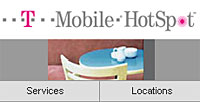 Although many early Wi-Fi adopters were laptop-toting business suits connecting in airports, hotel rooms and lobbies, the demographic is now far broader, with students, music fans, backpackers, silver surfers and others hitting the hotspots with their PDAs, smartphones and laptops.
Although many early Wi-Fi adopters were laptop-toting business suits connecting in airports, hotel rooms and lobbies, the demographic is now far broader, with students, music fans, backpackers, silver surfers and others hitting the hotspots with their PDAs, smartphones and laptops.
T-Mobile’s figures show fast accelerating Wi-Fi usage, with 90 terabytes (i.e. 90 million megabytes) of Wi-Fi data flying across their network in 2004, with December accounting for 10 terabytes alone. By May 2005, 18 terabytes had swooshed across the ether.
T-Mobile dished out the stats as it announced an expansion in the provision of US and overseas hotspots.
 New locations include the provision of roaming access throughout another 39 more airports in North America (making a total of 75 airports covered), with Wi-Fi guest room access being installed at 525 more hotels in the Marriott, Hilton, Ritz-Carlton, Doubletree and Renaissance chains.
New locations include the provision of roaming access throughout another 39 more airports in North America (making a total of 75 airports covered), with Wi-Fi guest room access being installed at 525 more hotels in the Marriott, Hilton, Ritz-Carlton, Doubletree and Renaissance chains.
In the US, every single Starbucks, FedEx, Kinko’s and Borders Books & Music store in the United States is covered by a T-Mobile hot spot, “unless they got built within the past five minutes,” quipped Joe Sims, VP and GM of the company’s hot-spot operations.
This brings T-Mobile’s hotspot tally to 5,700 locations in the US and 6,500 in Europe.
Roberta Wiggins, a senior research fellow with the Yankee Group was impressed with figures: “The numbers show that Wi-Fi is no longer an obscure, upstart technology. It’s gaining credibility.”
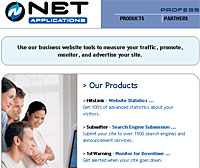 Smarting daily from the soaring popularity of its upstart rival Firefox, Microsoft is hoping to stem the exodus by bolting on new security features to their next version of Internet Explorer browser.
Smarting daily from the soaring popularity of its upstart rival Firefox, Microsoft is hoping to stem the exodus by bolting on new security features to their next version of Internet Explorer browser. With Internet Explorer losing friends fast because of its unsavoury reputation as a honeypot for homepage hijackers and skulking spyware, these new security features can’t come too soon for Microsoft.
With Internet Explorer losing friends fast because of its unsavoury reputation as a honeypot for homepage hijackers and skulking spyware, these new security features can’t come too soon for Microsoft.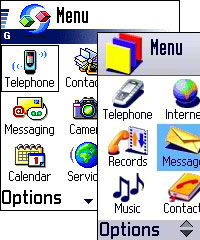 Finnish mobile phone giants Nokia have launched a new Web browser for their Series 60 smartphones.
Finnish mobile phone giants Nokia have launched a new Web browser for their Series 60 smartphones.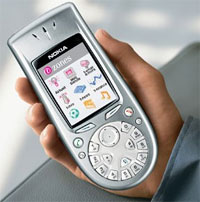 “Nokia is excited to enrich Series 60 with optimised mobile Web browsing. Open source software is an ideal basis for development since it enables Nokia to leverage and contribute to speedy software innovation and development. As a result, the entire Series 60 value chain, from manufacturers and operators to end-users, will benefit from the flexible architecture, full Web compliance and a truly enjoyable user experience,” enthused Pertti Korhonen, Chief Technology Officer, Nokia.
“Nokia is excited to enrich Series 60 with optimised mobile Web browsing. Open source software is an ideal basis for development since it enables Nokia to leverage and contribute to speedy software innovation and development. As a result, the entire Series 60 value chain, from manufacturers and operators to end-users, will benefit from the flexible architecture, full Web compliance and a truly enjoyable user experience,” enthused Pertti Korhonen, Chief Technology Officer, Nokia.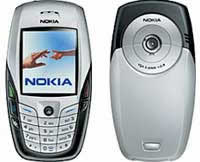 Philip Schiller, Apple’s senior vice president of Worldwide Product Marketing reckons the new browser is the dog’s nadgers: “The Safari Web Kit’s blazing performance, efficient code base and support for open standards make it an ideal open source technology for projects like Nokia’s new Series 60 browser.”
Philip Schiller, Apple’s senior vice president of Worldwide Product Marketing reckons the new browser is the dog’s nadgers: “The Safari Web Kit’s blazing performance, efficient code base and support for open standards make it an ideal open source technology for projects like Nokia’s new Series 60 browser.”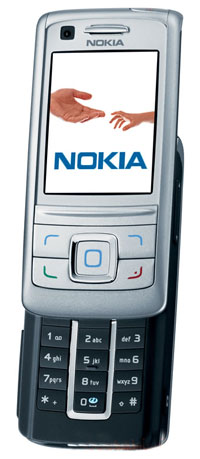 In a veritable orgy of mobile manufacturing, Nokia has launched a grand total of seven new handsets, including a dual camera 3G device and their most feature-rich CDMA phone yet.
In a veritable orgy of mobile manufacturing, Nokia has launched a grand total of seven new handsets, including a dual camera 3G device and their most feature-rich CDMA phone yet.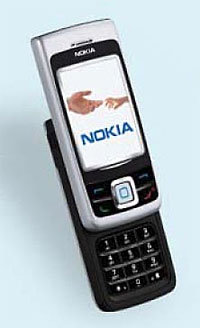 The 3G multimedia-tastic 6280 is a compact WCDMA/EDGE sliding handset sporting a 320 x 240 pixel screen, a 2 megapixel camera (with a VGA front camera for video calls), a removable mini-SD card and a built-in FM radio. It’s expected to appear on the shelves in the fourth quarter 2005 for EUR375.
The 3G multimedia-tastic 6280 is a compact WCDMA/EDGE sliding handset sporting a 320 x 240 pixel screen, a 2 megapixel camera (with a VGA front camera for video calls), a removable mini-SD card and a built-in FM radio. It’s expected to appear on the shelves in the fourth quarter 2005 for EUR375.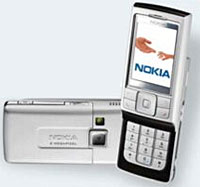 “The growth prospects on the CDMA front are extremely encouraging. The CDMA market is expected to grow at pace with the overall handset market and the global CDMA handset volume is expected to increase by 10 to 15 percent year-on-year in 2005,” he said.
“The growth prospects on the CDMA front are extremely encouraging. The CDMA market is expected to grow at pace with the overall handset market and the global CDMA handset volume is expected to increase by 10 to 15 percent year-on-year in 2005,” he said.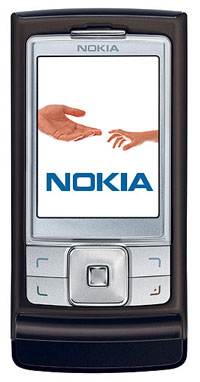 The last of the slider phones is the 6111, which has more than a passing resemblance to the hugely successful i-mate JAM phone, although the screen is much smaller at 128×160 pixels. The camera contains a 1-megapixel camera and 6x digital zoom and retails for around EUR270.
The last of the slider phones is the 6111, which has more than a passing resemblance to the hugely successful i-mate JAM phone, although the screen is much smaller at 128×160 pixels. The camera contains a 1-megapixel camera and 6x digital zoom and retails for around EUR270.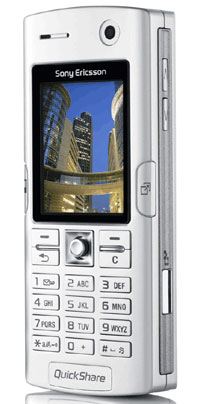 On the same day that Nokia went forth and multiplied with seven new phones, rivals Sony Ericsson announced four new handsets, aimed at increasing its presence in the low end and mid-market sectors.
On the same day that Nokia went forth and multiplied with seven new phones, rivals Sony Ericsson announced four new handsets, aimed at increasing its presence in the low end and mid-market sectors.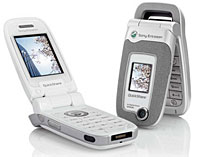 There’s 32MB of memory space on the phone for shunting on ringtones, wallpapers, still shots and video footage, with a built in music player and FM radio taking care of multimedia.
There’s 32MB of memory space on the phone for shunting on ringtones, wallpapers, still shots and video footage, with a built in music player and FM radio taking care of multimedia.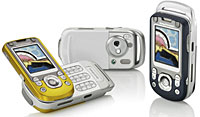 The S600 comes with 64MB of onboard memory, but sadly, there’s no memory card on offer – presumably it’s been left off so as to not compete with the higher spec’ed K750 model.
The S600 comes with 64MB of onboard memory, but sadly, there’s no memory card on offer – presumably it’s been left off so as to not compete with the higher spec’ed K750 model.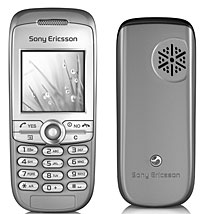 Flipped open, the twin-display phone offers a 1.8″ 128 x 160 pixel, 65k colour, TFT main screen, supported by a 101 x 80 pixel, colour secondary display on the outside.
Flipped open, the twin-display phone offers a 1.8″ 128 x 160 pixel, 65k colour, TFT main screen, supported by a 101 x 80 pixel, colour secondary display on the outside.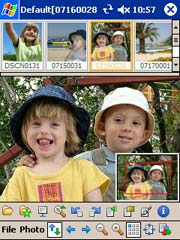 These days, a smartphone/PDA isn’t worth sniffing at unless it comes with a built in camera and a shedload of internal/external memory for storing mobile snaps on.
These days, a smartphone/PDA isn’t worth sniffing at unless it comes with a built in camera and a shedload of internal/external memory for storing mobile snaps on. When you install the Pocket PC program, there’s also an option to install the Resco Album Generator on your desktop PC – this program lets you create photo albums ON your desktop and then have the pictures and the album information transferred to your handheld device on the next sync.
When you install the Pocket PC program, there’s also an option to install the Resco Album Generator on your desktop PC – this program lets you create photo albums ON your desktop and then have the pictures and the album information transferred to your handheld device on the next sync. In full screen mode, the keypad can be used to scroll through picture collections manually, or users with tired fingers can set up a slide show and choose from a selection of transition fades and effects.
In full screen mode, the keypad can be used to scroll through picture collections manually, or users with tired fingers can set up a slide show and choose from a selection of transition fades and effects. 1. Ofcom have produced more original thinking than I gave them credit for, initially, perhaps because the introduction and summary to the document are not as robust as its contents. Read on…
1. Ofcom have produced more original thinking than I gave them credit for, initially, perhaps because the introduction and summary to the document are not as robust as its contents. Read on…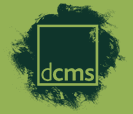 This reflects the EU rules governing the use of State Aid, which require that publicly funded services such as the BBC’s must complement rather than substitute or duplicate provision by the market. Furthermore, where market developments supersede publicly funded provision, the BBC should withdraw from those services or activities and re-direct its valuable public resources to areas of activity where there is a proven market failure. While market failure should not be the only test applied to BBC services, it should provide the underpinning for all publicly funded BBC services. The absence of a market failure analysis raises significant questions as to the compatibility of the BBC’s publicly funded status with European State Aid rules.
This reflects the EU rules governing the use of State Aid, which require that publicly funded services such as the BBC’s must complement rather than substitute or duplicate provision by the market. Furthermore, where market developments supersede publicly funded provision, the BBC should withdraw from those services or activities and re-direct its valuable public resources to areas of activity where there is a proven market failure. While market failure should not be the only test applied to BBC services, it should provide the underpinning for all publicly funded BBC services. The absence of a market failure analysis raises significant questions as to the compatibility of the BBC’s publicly funded status with European State Aid rules. Ofcom has today reported its quarterly figures on the rate of take-up of digital TV in the UK.
Ofcom has today reported its quarterly figures on the rate of take-up of digital TV in the UK. This is bad news for Sky, as it’s starting to get close to the around 7.5m homes that they have. What’s worse news for them is in the detail of the report. Sky’s all-important ARPU (Average Revenue Per User) has dropped from £386 in Q4 2004 to £382 in Q1 2005. This might not sound huge, but for an organisation that is trying to constantly increase their ARPU, it’s not encouraging. Another figure of note is their rate of churn, that’s up to 11.1% form 9.6% in the previous quarter.
This is bad news for Sky, as it’s starting to get close to the around 7.5m homes that they have. What’s worse news for them is in the detail of the report. Sky’s all-important ARPU (Average Revenue Per User) has dropped from £386 in Q4 2004 to £382 in Q1 2005. This might not sound huge, but for an organisation that is trying to constantly increase their ARPU, it’s not encouraging. Another figure of note is their rate of churn, that’s up to 11.1% form 9.6% in the previous quarter. The growth of aerial-delivered Freeview has been gaining more momentum of late, still spearheaded by the BBC using the Freeview channels to first-show a lot of its content.
The growth of aerial-delivered Freeview has been gaining more momentum of late, still spearheaded by the BBC using the Freeview channels to first-show a lot of its content. The breakdown of the figures is as follows
The breakdown of the figures is as follows Animated UK act, Gorillaz, are proudly claiming a world first for their ‘next generation’ enhanced video for ‘Feel Good Inc.’
Animated UK act, Gorillaz, are proudly claiming a world first for their ‘next generation’ enhanced video for ‘Feel Good Inc.’ Bundling in a host of interactive freebies is clearly being seen as a useful marketing tool for record companies, keen to discover new ways to part loyal fans with their cash.
Bundling in a host of interactive freebies is clearly being seen as a useful marketing tool for record companies, keen to discover new ways to part loyal fans with their cash. The band – brainchild of Blur’s Damon Albarn (aka 2D) and Tank Girl” creator Jamie Hewlett (aka Murdoc) – are already celebrating the US success of their second album, “Demon Days,” which has debuted at No. 6 on The Billboard 200.
The band – brainchild of Blur’s Damon Albarn (aka 2D) and Tank Girl” creator Jamie Hewlett (aka Murdoc) – are already celebrating the US success of their second album, “Demon Days,” which has debuted at No. 6 on The Billboard 200.